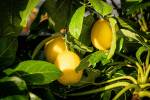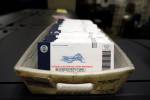Plants along lawn’s edge need own water source
Q: I have a patch of grass in my backyard and I would like to put plants, shrubs and flowers around the perimeter. Can you tell me what type of plants to install since they will be getting their water from the sprinklers? I follow the watering schedule for my area and during the summer months there will be a lot of water so I would need to know what plants and shrubs like a lot of water.
A: This is not how we should be thinking of watering in the desert. Plants that grow on the perimeter of a lawn survive because of the overirrigation of the lawn. If we give the lawn precisely the amount of water it needs, there will be very little water left for plants growing along the perimeter.
Lawns should be irrigated so that the water supplied to them is adequate and no more. Plants growing along the perimeter of a lawn should be watered so that they get precisely enough water as well. This would require that these perimeter plants be irrigated with their own irrigation system .
Lawns are watered frequently and with small volumes of water because of their shallow root systems. Other shallow-rooted plants, like annual flowers and vegetables, are watered in the same manner and require the same frequency of irrigation.
Deeply rooted trees and shrubs are watered less often but with a higher volume of water so that their entire root system is wetted when the irrigation has been completed.
Q: Do I fertilize my peach tree even though it looks like it's doing great? If so, what type of fertilizer and concentration would you use and how often?
A: You adjust your fertilizer application according to how the tree is growing. If your tree is growing well, then reduce the amount you apply; but do not eliminate your fertilizer application.
If the growth is lush, then cut way back on the amount of fertilizer . If you're growth is skimpy, then increase the amount of fertilizer you apply. By cutting back I would reduce it by half. If you're increasing the fertilizer, then increase it by half the amount.
You can increase the amount of fertilizer you give a tree by increasing the amount you give it in a single application or, a much better approach, apply it more often in smaller amounts. You can accomplish the same thing by switching to slow-release fertilizers .
Begin fertilizer applications in late January and continue them into July if you want to, but use very small amounts of fertilizer at each application. You can apply fertilizer as a single application in late January and not fertilize again for the rest of the year if you want to. That also will work. Do not skip your iron applications regardless of your other fertilizer applications.
Bob Morris is a horticulture expert living in Las Vegas; he is on special assignment in the Balkh Province, Afghanistan, for the University of California, Davis. Visit his blog at xtremehorticulture.blogspot.com.























